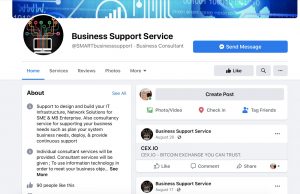Your workforce is the epitome of your company – but how exactly can you empower, train, and coach them when transitioning to a digital enterprise, especially in a crisis?
It’s no surprise that Covid-19 has forced companies to interact with customers online to survive and stay relevant. So, as technology continues to evolve at an equally breathtaking rate as customer expectations, it is easier for most businesses to focus on adopting new tools and technology to surprise and surpass customers’ needs. But, as many companies moved to large-scale technology adoption, they soon ran into culture-related issues. In other words, by getting caught up in the novelty and excitement of digitally transforming their organization, they forgot to instill a culture for your employees that help transition to a digital enterprise.
So, regardless of your industry, creating a digital transformation strategy for your workplace will involve developing a supportive environment where employees are empowered to learn how to use new technology and processes to thrive in their role in a digital world. According to the PwC Talent Trends report, organizations that focused on developing the capabilities and employability of their employees were more confident that they could compete in a digital world than those that didn’t. You’ll also be glad to know that companies who possess these employees achieve 19% more growth in revenue than those who don’t. Before I delve into how you can create and encourage adopting a digital-first mindset, let’s discuss why having a digital culture is vital for your organization’s future.
Why You Need To Adopt A Digital Culture
Think about it. Would you succeed if a friend or colleague asked you to carry out a difficult task without instructions? In the same way, it is futile to ask your employees to provide a digital customer experience if they don’t understand why this needs to happen and what skills or behaviors they need to possess to make it happen.
I believe that before you reward your customers with seamless digital experiences that they want, consider your employees on the ground who will be putting the digital transformation of your organization into action. Empower them to act in line with an organization’s values and purpose by giving them a digital culture roadmap that educates them on making favorable decisions for the digital customer. Once trained on the behaviors that drive better, quicker results for the customer, employees across various departments will be encouraged to work together to go the extra mile for a better experience. So, how can your company seamlessly create a target digital culture for your employees to adopt?
Define The Type Of Digital Culture Your Company Requires
If your company wants its employees to adopt a digital-first mindset, you have to be mindful that we are naturally resistant to change as humans. Whether it is a fear of appearing incompetent in their role or a fear of failure, this resistance to change is likely to prevent your employees from adopting new technology in their roles as part of your digital transformation. This means that leaders need to use their emotional intelligence and negotiation experience to address any concerns about the change to encourage the transition to a digital-savvy world.
To start, focus on why you want to establish a digital culture and what it involves for your unique company. This means considering whether the employees at your organization are ready for a digital shift and the business goals, departments, and processes you need to improve with technology. Once you find your ‘why’ and ‘who’, you need to think about the characteristics of a target digital culture that you want to adopt. For example, do you want your employees to be more data-driven and customer-centric? Is it essential for them to embrace risk-taking or collaboration? Or is your need to retain high-performing talent driven by your passion for continual learning and development?
Then, when you decide which characteristics you want to adopt based on your company’s goals and values, you need to express them as behaviors that your employees can follow as part of a digital culture blueprint. To get a better idea of what your employees want, hold interviewees with them so that you can find out what matters to them and what their concerns about their roles are. This feedback can also help you assess the gap between current and preferred behaviors, which helps determine the changes needed for a more successful digital transformation.
Embrace Digital Behaviors At The Top To Encourage Employees At The Bottom
You will find it easier to drive a digital culture change at your company once you define a clear vision and purpose for it. According to a survey by MIT Sloan Management Review, 70% of employees said that it is vital for them to work for a company with a purpose that they feel strongly attached to. So, before expecting employees to buy into a roadmap for digital culture, I think that leaders must embody and embrace these behaviors first. In this way, the people at the top of a company can act as role models for the digital traits and display the expected behaviors in real-time.
For example, to demonstrate the benefits of having a customer-first mindset, your company could highlight employees for an award or incentive when praised by name in a customer review. In this way, you can actively train and coach your employees to share your organization’s beliefs and act how you want them to in a digital world. Additionally, your employees will also benefit from customized training on a tool to know how it can help them grow in their role and boost their productivity.
Continually Test, Embed And Measure The Success Of Your Digital Culture Initiatives
As digital transformation is an iterative process that your company will have to keep going through, it is better to break down digital culture initiatives into smaller projects related to business outcomes. In my experience, this bite-sized approach will feel less threatening for employees to adopt and will allow you to test the waters before proceeding to a larger scale rollout.
Similarly, by testing small changes to the business first, you will make it easier for your employees to offer their feedback or voice their concerns on any of these actions before implementing them within the company. Although simple, I believe that this action will make your employees feel heard and proud that they have co-created a digital change.
Beyond the testing stage, your business also needs to think about assessing its current operating model or measuring the success of changes to certain areas of the organization, such as leadership or performance management through key performance indicators. In this way, you can ensure that you are continually encouraging the adoption of the right behaviors, not the wrong ones. When developing your KPI’s, think about your target digital culture characteristics and whether the required changes have moved you further towards these goals.
When transitioning to a digital enterprise, ignoring your workforce’s human needs would be a futile practice to adopt. When your focus is on empowering your employees to learn how to thrive in a digital world within a safe, supporting environment, you can ensure that your transformation is sustainable and profitable in the long term. When you build a digital culture through your employees’ eyes, you will find it easier to change their beliefs and encourage new behaviors that will enable them to survive any crisis and serve your customers better
Business & Finance Articles on Business 2 Community(26)






